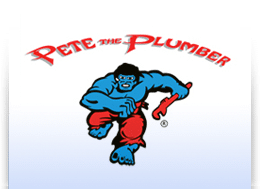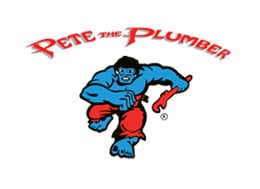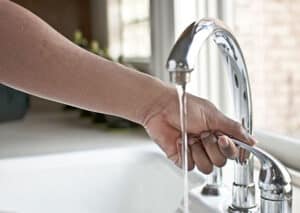 In summer, if the water heater is not heating water efficiently, there is not enough hot water, or the water you get is not hot enough, you might be tempted to just struggle through.
In summer, if the water heater is not heating water efficiently, there is not enough hot water, or the water you get is not hot enough, you might be tempted to just struggle through.
Shorter showers and lukewarm face washes are not too serious when the weather’s okay outside.
Come winter, any problems with your hot water supply are magnified. Nobody wants to face those dark, cold winter mornings without a nice long hot shower first.
Don’t worry – water not being quite as hot as it used to be and having to turn the dial a little higher is quite a common problem in Calgary homes.
You can perform some general troubleshooting to fix many issues. But what problems should you be looking for with your hot water water quality setup and how do you go about fixing them?
Where do you start when your water is not hot enough?
Whether you have an electric, gas or tankless water heater, problems can occur over time with water not getting hot enough.
It may sound overly simple but sometimes it can be as straightforward as heading to your water tank and adjusting the thermostat. They sometimes get bumped by accident and cause the temperature to change.
Some people also forget that the thermostat was turned down in summer to conserve energy.
So, simply increasing the temperature on the thermostat is a quick and easy fix in this case.
Be sure not to set the temperature any higher than 120ºF (or 49ºC), as this can result in scalding and serious burns when you use the water.
If you turn up the thermostat and there is no corresponding increase in water temperature, the thermostat may be faulty, in which case you will need to call a professional in to replace it.
Other common problems with lukewarm water
If troubleshooting the most obvious and simplest-to-fix problem doesn’t work, you’ll need to dig a little deeper.
Here are some other common problems to look for if you’re getting lukewarm water. They may not all apply to your system.
If you have a tankless water heater, for instance, you can obviously skip the sections on tank problems, not to mention your high water quality.
A broken dip tube
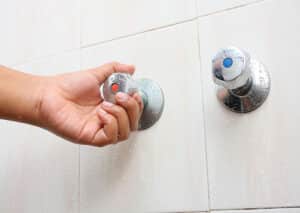 The role of the dip tube in your water heater is to push cold water to the bottom of the tank, where it’s heated.
The role of the dip tube in your water heater is to push cold water to the bottom of the tank, where it’s heated.
The water for faucets and appliances comes from the hot layer on top (that’s where the outlet is) so if the water is not sufficiently circulated, it may come through warm or even cold.
The dip tube needs to be in good working order to produce sufficiently heated water but sometimes they suffer cracks.
Lukewarm water may then enter the pipe system and not be hot enough when it comes out of the faucet or shower.
Generally, this problem is only present in older water heaters (20 years or more).
A broken gas valve
Once your water heater’s life goes beyond 10 years, its gas valve becomes increasingly susceptible to damage, especially if the device has not been well maintained over the years.
If you can smell rotten eggs or garbage, it’s likely the smell of gas due to a broken gas valve or a leak in your gas line. The gas is therefore not heating the water properly.
This is a dangerous problem that needs urgent attention. Parts may need to be replaced. Switch the gas off and call your gas company or plumber. Do not attempt DIY.
A broken internal heating element
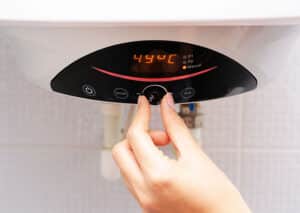 Electric water heaters generally have two heating elements. If one of them breaks, the other will have to work twice as hard and this makes it less efficient at heating the water.
Electric water heaters generally have two heating elements. If one of them breaks, the other will have to work twice as hard and this makes it less efficient at heating the water.
If the water is constantly lukewarm, it usually indicates a problem with the upper heating element. A short-lived supply of fully hot water points to a problem with the lower heating element.
Regular checking and maintenance will prevent damage but if the problem has already surfaced, call in a professional to test and replace the faulty element.
Sediment build up in the tank
Water that enters your water heater tank is rarely 100 percent pure.
Calgary water is classified as hard and so it carries plenty of dissolved minerals, as well as possible sand particles and other debris. This all falls to the bottom of the tank when the water sits and is heated.
Over time, sediment can build up in the bottom of the tank, where the burner usually is. This can lead to slower heating or poor efficiency in your water heater, meaning lukewarm water rather than hot water.
The solution for this is to drain the tank and to use a water softener.
A leaking water tank
If you discover that your water tank has a leak, do not try to repair it or it could lead to dangerous situations and/or further damage to your home.
Call in a professional to replace the unit.
When might you need to replace your water heater?
Pete’s professional advice on replacing your water heater is as follows:
“If you are only getting 5-7 minutes of hot water for showers, and you can’t fill the tub up with hot water, then it’s likely the dip tube in your hot water tank that needs replacement. We can change that relatively easily and cost-effectively for you.
However, if your tank is over eight years of age, it’s probably just getting old and tired. It’s best to change it and be proactive rather than waiting for a problem. You can call us further for pricing on that.”
Without regular maintenance, such as annual flushing, your water heater’s system is likely to suffer from damaged parts at some point, most commonly the thermal switch, thermostat or heating element.
Usually, a licensed plumber is required to diagnose and either replace the parts or replace your water heater.
Hot water not hot enough in the shower?
If you are getting some hot water in the shower but not enough, it may mean that you need to upgrade the size of your heater – or change to a tankless water heater.
If someone showers before you or uses another hot water appliance and the hot water runs out before you complete your shower, it’s a sure sign that the water heater is not sufficient for the household. Demand outstrips supply.
In this case, talk to your plumber about upgrading your model.
Water-heating technology moves on quickly, so you may be able to install a more efficient model, such as a new tankless water heater that heats water as required rather than storing it in a tank.
Need some hot water help?
While not-hot-enough water is not quite as bad as no hot water at all, it’s a problem you certainly don’t need.
Most people don’t know where to start with troubleshooting a faulty water heater. Follow the troubleshooting steps above and attend to hot water problems now rather than in the depths of winter.
If you’d like us to take a look at your hot water system, contact Pete the Plumber at (403) 257-1766 or head online to request an appointment.
